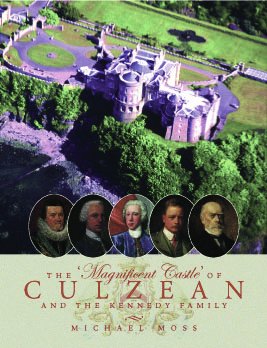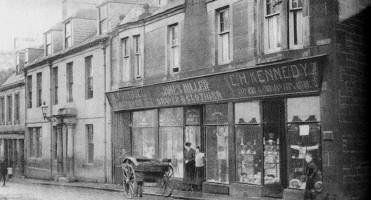 |
A new book The 'Magnificent Castle' of Culzean and the Kennedy Family by Michael Moss, Research Professor of Archival Studies, University of Glasgow is now available for order. Publication date of this 288 page book is October 2002.
Explore Culzean Castle With This New Book
A Major New
History of Culzean |
|
How to order: Send your delivery details and a cheque (made payable
to Marston Book Services) to Edinburgh University Press, 22 George Square,
Edinburgh EH8 9LF. |
||
|
News article from the Ayrshire Post of November 29th 2002 |
|
A TOWER house on the Ayrshire coast became the ‘Magnificent Castle’ of Culzean. And a major new book tells the history of the most visited property of the National Trust for Scotland. Lavishly illustrated, the book is aptly named The ‘Magnificent Castle’ of Culzean and the Kennedy Family. Author Michael Moss has carried out extensive research — as you would expect from a research professor of Archival Studies at the University of Glasgow. He has drawn on estate records, original plans, and Kennedy family correspondence to create this beautifully produced book. Professor Moss tells how the castle developed from a tower on the edge of a cliff, and became a centre for smuggling, thanks to a network of caves below. Sir Thomas Kennedy, 9th Earl of Cassillis, was thus able to take an extended ‘grand tour’ of Europe in the 1750s, returning home full of ideas. These were brought to fruition by his brother David, the 10th Earl, who engaged Robert Adam to create a stately home. However, the masterpiece produced by Adam led to bankruptcy, and the estate was rescued by wealthy American cousins when both Adam and the 10th Earl died in 1792. Archibald Kennedy, 1st Marquess of Ailsa, completed the house and lavished even more money on the property. Professor Moss tells the family history in an easy-to-read manner, with family trees. He reveals, for instance, that when wicked Sir Archibald Kennedy died in 1710, and his soul was taken by the ‘muckle devil’ to hell, his son Sir John felt it unwise to publicise his Jacobite allegiance. Instead, he became a wine and spirit merchant — and a smuggler! — using caves beneath Culzean to hide his contraband. Jacobitism and smuggling went hand-in-hand, as it was a good way of getting back at the Hanoverians without the same risks as rebellion. The trade was continued by Sir John’s sons after his death in 1742. Sir Thomas, who inherited the estate in 1744, was in the Hanoverian army, but after Culloden returned to his Jacobite roots. He went to Paris to learn to play the viol (an early form of violin), as his father and grandfather had done, and then to Italy, where he flirted with Catholicism. In his absence, the smuggling trade was left in the hands of his factor, Archibald Kennedy before dying out by the late 1760s. The book, featuring many new pictures, is published by Edinburgh University Press in association with the National Trust for Scotland, and costs £35 in hardback and £19.99 in paperback. IN about 1710 Archibald Kennedy, a cousin of Sir Archibald, went to New York with Governor Hunter of the Hunterston family of West Kilbride. He prospered and became receiver general of customs for New York, buying No.2 Broadway as his home and No.3 to be converted into a customs warehouse. His third son, also Archibald, joined the navy and became a very successful frigate captain, earning some £250,000 in prize money during the Seven Years War. The captain was posted to New York just before the outbreak of the American War of Independence, and took command of transports. Now his father’s heir as well as having his own fortune, Captain Archibald Kennedy built for himself what was reputed to be finest house in the colonial city at No.1 Broadway. The house served as British HQ during the war, but later became General George Washington’s home. Captain Archibald’s children became close friends of the Duke of Clarence — later King William IV — who was stationed in New York as a midshipman. The captain and his family returned to Britain in 1781, and he got to know his cousin, the childless 10th Earl of Cassillis, who was busy rebuilding Culzean. When the Earl died in 1792, the captain succeeded him as Earl of Cassillis. But being a Whig and an American, his other Scottish cousins were not best pleased. A protracted lawsuit followed, and wasn’t settled till around 1815, by which time the captain was dead. But his son succeeded, used his father’s fortune to complete the castle and gardens. And he was created Marquess of Ailsa by his friend King William IV in 1831 . |
